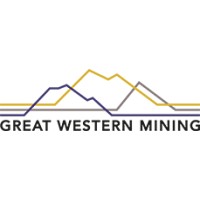The market has entered an unusual phase where copper, traditionally driven by industrial demand, now rides a rare convergence of structural shortages, pricing inflection, and supply risk that is likely to weigh on investor portfolios in unexpected ways.
From London to Shanghai, copper has reclaimed its footing at near three-month highs, supported by a markedly weaker US dollar, heightened speculative interest, and persistent concerns over upstream disruption. The underlying tension is most evident in the shifting balance of power between miners and smelters. Recently, major Chinese smelters accepted processing deals that yield no fees, a signal of just how tight the copper concentrate market has become. This kind of arrangement, once unthinkable, underscores a larger truth: ore availability is increasingly dictating terms.
For investors, this marks a critical turning point. Copper is not only foundational to traditional industries, it is rapidly becoming one of the most strategic inputs of the modern economy. Grid expansion, electric vehicle rollouts, renewable infrastructure, all depend on copper. And yet, the project pipeline to bring new supply online is running dry. Environmental permitting delays, project cost inflation, and declining ore grades are all impeding the pace of new development. This bottleneck is compounded by the fact that the capital cycle for copper mines typically spans a decade or more from discovery to production.
Add to this a policy backdrop full of friction. Tariff anxieties in the US, coupled with ongoing recalibrations of industrial strategy, have created an air of unpredictability around cross-border metal flows. This unease is already finding expression in market pricing, as traders begin building in premium risk for physical delivery. The spot market for copper is tightening, with premiums rising at a pace not seen since the previous commodity supercycle.
Meanwhile, refiners in China are operating at high volumes, but this belies the upstream reality. Surging refined copper output is not necessarily evidence of oversupply, it may instead reflect drawdowns on existing inventories and a scramble to secure feedstock. Miners, for their part, are gaining leverage. With smelters squeezed and processing fees falling away, producers are beginning to capture a greater share of the value chain.
Publicly traded copper majors are already seeing these dynamics priced into their valuations. Across the board, large-scale miners with efficient cost structures and strong balance sheets are being rewarded. The market is beginning to differentiate, those with existing production capacity and near-term expansion potential are commanding premium attention. Their stocks are now quietly absorbing the upside of the pricing shift, even as the broader market remains distracted by macro volatility.
However, this remains a story with nuance. The same supply tightness that creates margin opportunity can also invite volatility. Tariff-related distortions, slower-than-expected electrification uptake, or broader geopolitical stress could all shift the tempo. Investors must weigh short-term noise against long-term fundamentals.
Viewed through a strategic lens, copper is transitioning from a cyclical metal to a structural asset. This alters the investment thesis. No longer merely a reflection of industrial growth, it is becoming a proxy for global decarbonisation and the rewiring of infrastructure. That carries both risk and opportunity, but for those positioned early, the supply narrative may prove more decisive than any near-term price action.
Great Western Mining Corporation Plc (LON:GWMO) is a mineral exploration and development company, incorporated in Ireland with operations in the USA.







































